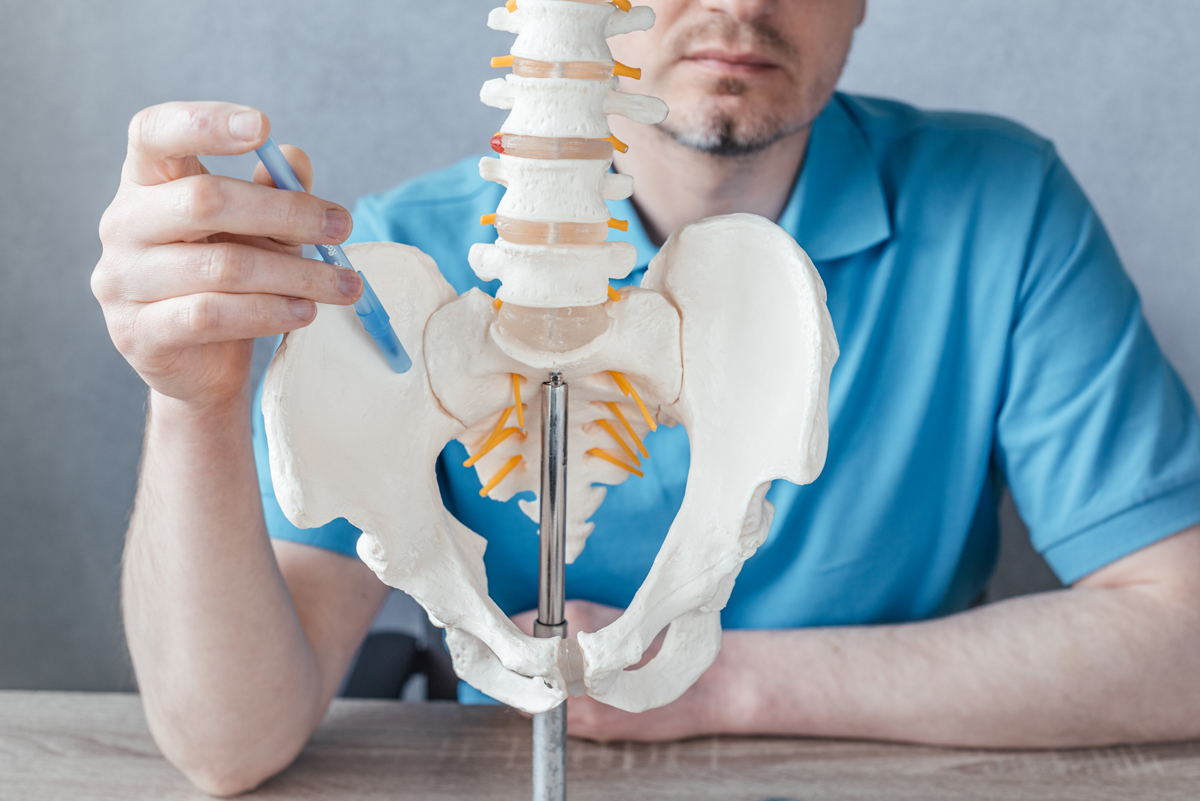About 85% of all people have lower back pain at some point in their life. Between 15–30% of all low back pain is generated by the sacroiliac (SI) joint. In people with hip osteoarthritis or status post hip arthroplasty, that figure is even higher. The sacroiliac joint lies below the lumbar spine and above the tail bone. It connects the sacrum (the triangular bone at the bottom of the spine) with the pelvis.
SI joint pain or dysfunction is one source of low back and/or leg pain. The leg pain may feel similar to sciatica or pain caused by a lumbar disc herniation.
The ‘SI Joint’ has the following characteristics:
- It is a “true” synovial joint with a joint capsule, fluid, and nerve endings • Has roughly two degrees of motion (out of 360)
- Transmits all the forces of the upper body to the pelvis (hips) and legs
- Acts as a shock-absorber
- Undergoes extra stress when there has been lumbar fusion, or degenerative changes in the spine, hips, or knees
Sacroiliac joint pain is likely caused by an alteration in the normal joint motion. This source of pain can be caused by either too much movement (instability), or too little movement (fixation).
Treatment begins with the correct diagnosis. Most SI joint pain will not improve with physical therapy directed for the spine, or epidural injections. Appropriate treatment entails specialized physical therapy correcting biomechanical forces (muscles and movements) that stress the joint, injection of anesthetics and anti-inflammatories into the joint, and if need be, ablation of the nerves that go to the joint.
